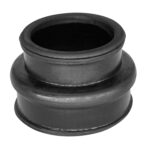DOHC, or Dual Overhead Camshaft, is a type of engine design that often signifies a higher-performance vehicle. But what does it actually mean and how does it impact your car’s performance? This article will delve into the mechanics of DOHC engines and explain why they are often preferred in performance-oriented vehicles.
A camshaft’s primary function is to control the opening and closing of the engine’s valves, allowing air and fuel in and exhaust gases out. In a DOHC engine, there are two camshafts located in the cylinder head, one dedicated to controlling the intake valves and the other dedicated to the exhaust valves. This is in contrast to a Single Overhead Camshaft (SOHC) engine, which uses only one camshaft to control both intake and exhaust valves.
The key advantage of a DOHC setup lies in its ability to facilitate four valves per cylinder – two for intake and two for exhaust. This configuration offers several significant benefits:
Benefits of DOHC: Enhanced Breathing and Performance
Increased Airflow: Four valves provide a larger overall valve area compared to two valves. This allows for greater airflow into and out of the cylinder, enabling the engine to “breathe” more efficiently. More air intake translates to a more powerful combustion and increased horsepower, especially at higher engine speeds (RPM). Efficient exhaust expulsion further enhances performance by minimizing back pressure and allowing for cleaner, more complete combustion cycles. This is crucial for maintaining power and efficiency throughout the engine’s operating range.
Optimized Valve Control: With dedicated camshafts for intake and exhaust valves, DOHC engines allow for more precise control over valve timing and lift. This precision allows engineers to fine-tune the engine for optimal performance across a wider range of RPMs. It also enables advanced valve timing technologies like Variable Valve Timing (VVT), further enhancing power and fuel efficiency.
Tuned Intake Runners (Optional): Some manufacturers pair DOHC engines with specially designed intake runners. These runners utilize the physics of pressure waves to optimize airflow into the cylinders. By carefully calculating the length of the runners, engineers can create resonance effects that “supercharge” the intake process, effectively forcing more air into the cylinder and further boosting power output, similar to the effect of a turbocharger.
DOHC: A Hallmark of Performance
While not universally indicative of high performance, DOHC is a common feature in sports cars and performance-oriented vehicles due to its inherent advantages in airflow and valve control. The ability to achieve higher RPMs and generate more horsepower makes DOHC a preferred choice for engines designed for speed and responsiveness.

